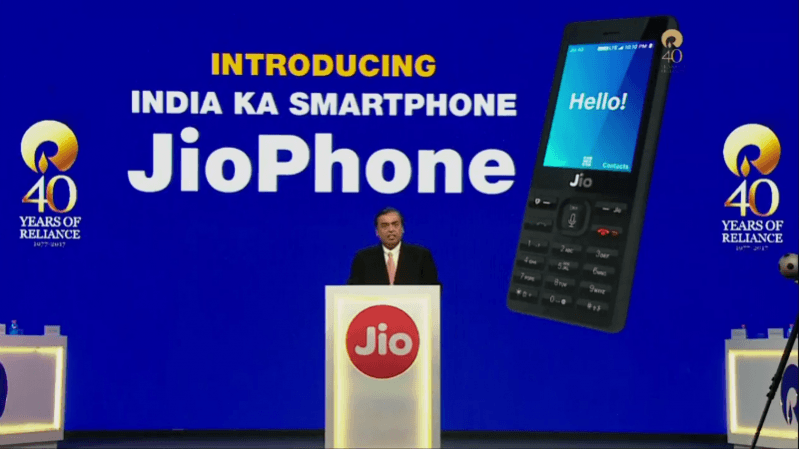One of the main objectives of Reliance Jio's ambitious JioPhone 4G VoLTE feature phone project was to bridge the gap between rural and urban India with the help of an affordable and easy-to-use alternative to touchscreen-based high-cost 4G smartphones.
Dubbed 'India ka Smartphone', the JioPhone was seen as a revolution in the field of modern telephony with its super-fast 4G data connectivity and smart features encased in a user-friendly keypad-clad feature phone. The phone was bound to win the hearts of millions of Indians who until now were hesitant to hop on the 4G bandwagon.
But it seems that the JioPhone has fallen short of meeting that expectation. The device has proved to be a hit with the urban users, but not so with their rural counterparts.

According to data released by the Telecom Regulatory Authority of India (TRAI), of the total 160.09 million Jio subscribers in the calendar year 2017, only 41.08 million users were from rural areas. This means that out of 100 percent, only a mere 25.66 percent of Jio subscribers are from rural areas.
Jio's less-than-stellar customer base in the rural areas is just as surprising as its growth in the last couple of years. The private telecom operator, which took the telecom industry by storm, has put up an unimpressive show against incumbent operators like Vodafone, Idea, and Airtel, with Vodafone India topping the charts with a sizeable 54.06 percent of the rural markets share followed closely by Idea Cellular at 53.97 percent and Bharti Airtel at 50.98 percent.
Jio's low subscriber base is also an indicator of the fact that the rural population hasn't quite received the JioPhone in the manner that Reliance had intended. The low proportion of rural subscribers for Jio can be attributed to the fact that Jio is a 4G-only network, which means the network is unusable with a non-4G handset, or in other words, the user will require a 4G-enabled handset to use Jio's services.

The cost of owning a 4G compliant handset is too high and it can be understood that many people in the rural areas wouldn't want to invest in a high-cost 4G smartphone. But then, Jio launched the dirt cheap and "effectively free" JioPhone at Rs 1,500 to attract such people. However, despite the JioPhone, it hasn't managed to get past the more established telecom players in rural areas.
The reason for the JioPhone's lukewarm reception in the rural areas is not very hard to discern as the process of procuring or purchasing a JioPhone is a little more cumbersome than getting a regular feature phone. The buyer has to first deposit Rs 500 and pre-book the phone and then wait for a few more days until the phone reaches him/her, and pay the remainder of the amount on receiving the phone.
Moreover, the JioPhone comes with a refundable deposit amount of Rs 1,500, to avail which, the consumer needs to recharge the phone with a minimum recharge pack of Rs 153 every month for a period of three years. The idea of paying Rs 1,500 might seem like a bit of a stretch to the rural consumer who would rather simply get a 2G feature phone for less than Rs 1,000 and make recharges offered by operators like Airtel and Vodafone which start at as low as Rs 10.
Some analysts like Counterpoint Research Associate director Tarun Pathak also believe that one of the other factors could be the marketing and promotions for the JioPhone which were more focused on urban India.

Jio's minimum recharge plan for the JioPhone was Rs 153 initially but the company has recently launched the Rs 49 recharge plan exclusively for the JioPhone users.
With this Rs 49 recharge plan, Jio seeks to counter the high recharge price obstacle. And if Jio can come up with an easier and perhaps an even lower-priced JioPhone handset in the future with recharge plans starting at Rs 10, maybe then the JioPhone will be able to attract more users in the rural market. Also, the data is for last year, when Jio hadn't the Rs 49 recharge plan in place, so hopefully there might be some increase in Jio's rural market share this year.

















